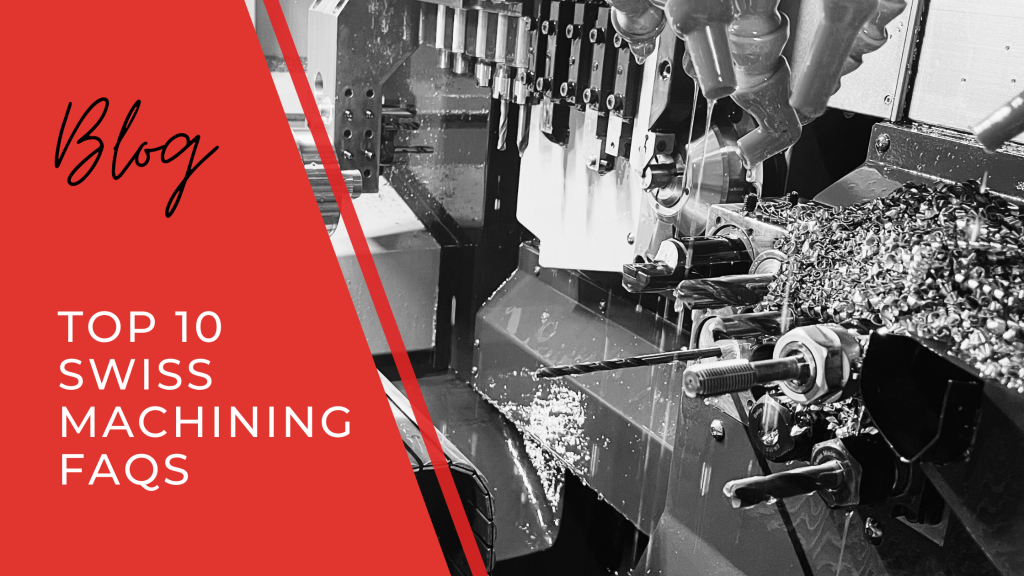
In the world of manufacturing, you already know that precision and efficiency are important. As technology advances, so do the methods and machines used to create intricate components and parts. One groundbreaking technology is CNC Swiss machining. If you’re exploring ways to enhance part quality, reduce production time, and lower costs, CNC Swiss machining might be the solution for you. But what exactly is swiss machining? Here are some of the top FAQs surrounding CNC Swiss machining to help you understand its benefits and applications.
- Why is it called a “Swiss” machine and what does it have to do with screws?
The origin of the term “Swiss” in CNC Swiss machining can be traced back to the Swiss watch industry. The ability to produce tiny, precise components, especially watch screws, was crucial in the watchmaking industry. The level of automation required for exceptional quality in large quantities during the industrial revolution led to the development of Swiss screw machines.
- How has the Swiss screw machine evolved?
From its origins in the 19th century, Swiss screw machines have undergone significant evolution. Early machines used disc cams to rotate tooling, but with the advent of the computer numerical control (CNC) in the 1970s, these machines became unrecognizable to their predecessors. CNC Swiss machines now offer an array of tooling capabilities, improved servo communication, motion, and speed, as well as the virtual elimination of secondary operations.
- What are the advantages of using a CNC Swiss machine?
CNC Swiss machining is designed to achieve tight tolerances while improving repeatability and production quality. The method leverages features such as bar stock feeders, guide bushings, and second spindles to provide advantages like improved precision, faster production times, and reduced costs.
- What are some of the advantages?
In CNC Swiss machining, the bar stock is fed through a chucking collet, with the headstock clamping onto it. The guide bushing locates the bar, and unlike conventional lathes, the headstock moves along the Z-axis. This motion of the bar acts as the feed for material removal, eliminating deflection and allowing for simultaneous material and tool movement.
- How does a Swiss machine ensure quality and precision in the final product?
The chucking collet, patented in the 1870s, provides stability to the workpiece. Today, the guide bushing plays a vital role in ensuring efficiency and accuracy. By reducing deflection to zero, the guide bushing allows the cutting tool to make deep passes, reducing tool wear rates and ensuring consistency and accuracy.
- How does a Swiss machine save time?
CNC Swiss machines can significantly reduce production time based on machine design, part size, and volume. The machines, especially those with multiple tools and spindles, can often produce finished components without the need for secondary operations, saving both time and costs.
- What industries and applications benefit from parts fabricated by a Swiss screw machine?
CNC Swiss machining’s accuracy, quick production times, and cost reduction make it ideal for various industries, including aerospace, defense, electronics, medical devices, and automotive. Precision-machined components are critical in these industries for applications ranging from airplane parts to medical devices.
- What should I look for in a CNC Swiss machining partner?
When choosing a CNC Swiss machining partner, consider factors such as years of experience, ISO 9001-2015 certification, and flexibility in material selection. A reliable partner with a proven track record in precision metal fabrication can ensure the success of your project.
- How does CNC Swiss machining differ from traditional methods?
CNC Swiss machining stands out through its use of automated, precise CNC technology. Unlike traditional methods, Swiss machining’s unique setup allows simultaneous, efficient machining of multiple features, minimizing the need for secondary operations. The close tool-to-workpiece proximity ensures exceptional accuracy, particularly beneficial for small, intricate components with tight tolerances. In essence, Swiss machining combines advanced technology, precision, and efficiency for superior component fabrication compared to traditional approaches.
- Where can I learn more about Swiss machine capabilities?
To explore more about CNC Swiss machining capabilities and how it can benefit your manufacturing needs, contact a reputable provider like United Tool. With years of experience and ISO certification, United Tool can offer a vertically integrated solution for Swiss machining and precision CNC machining requirements.
CNC Swiss machining is a transformative technology that has revolutionized the manufacturing landscape. Its precision, efficiency, and versatility make it a preferred choice for industries requiring intricate components. If you’re looking to improve your manufacturing processes, partnering with an experienced CNC Swiss machining provider like United Tool, could be the key to unlocking enhanced quality and efficiency. Contact United Tool today to explore how CNC Swiss machining can elevate your manufacturing capabilities.
